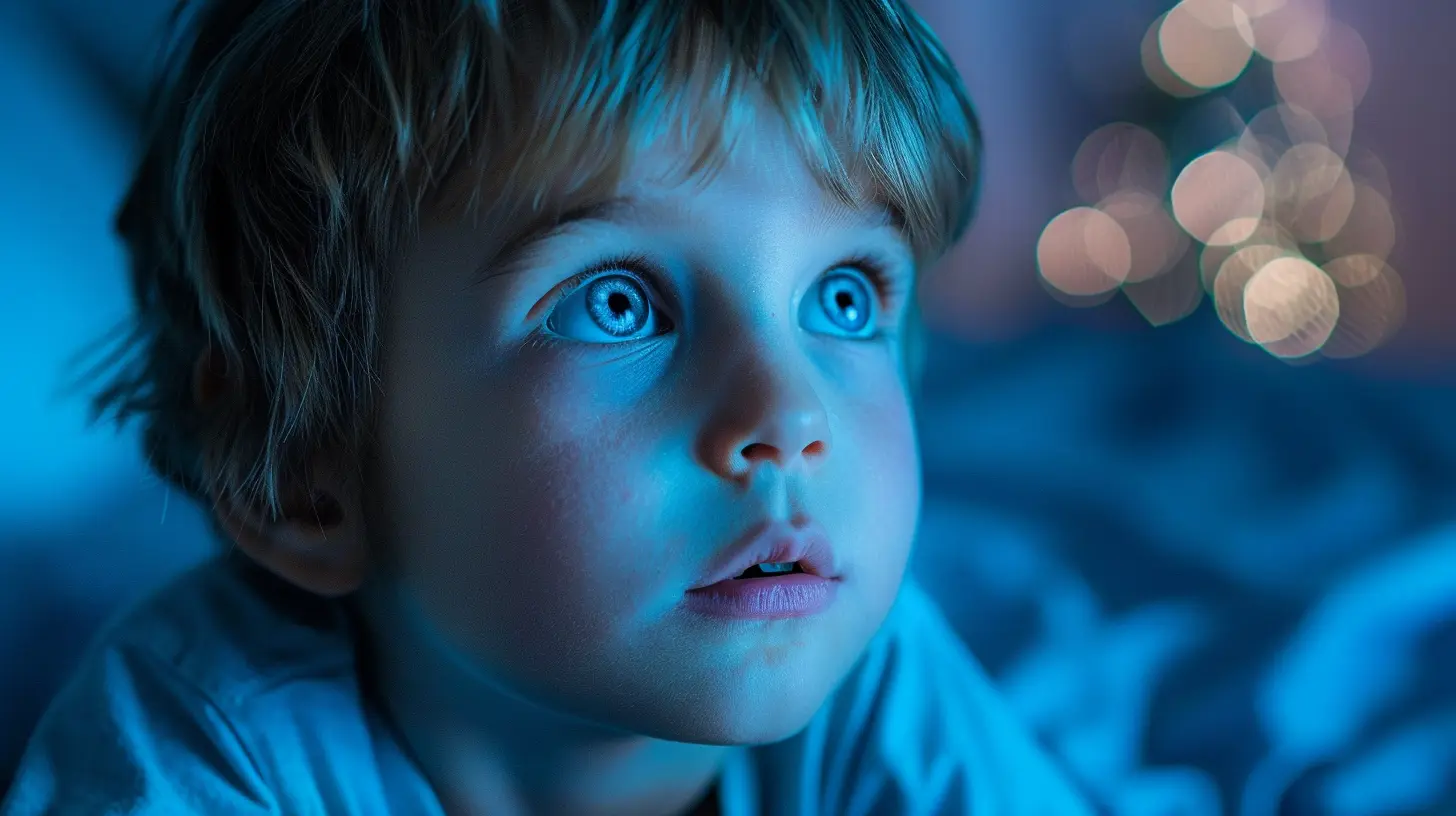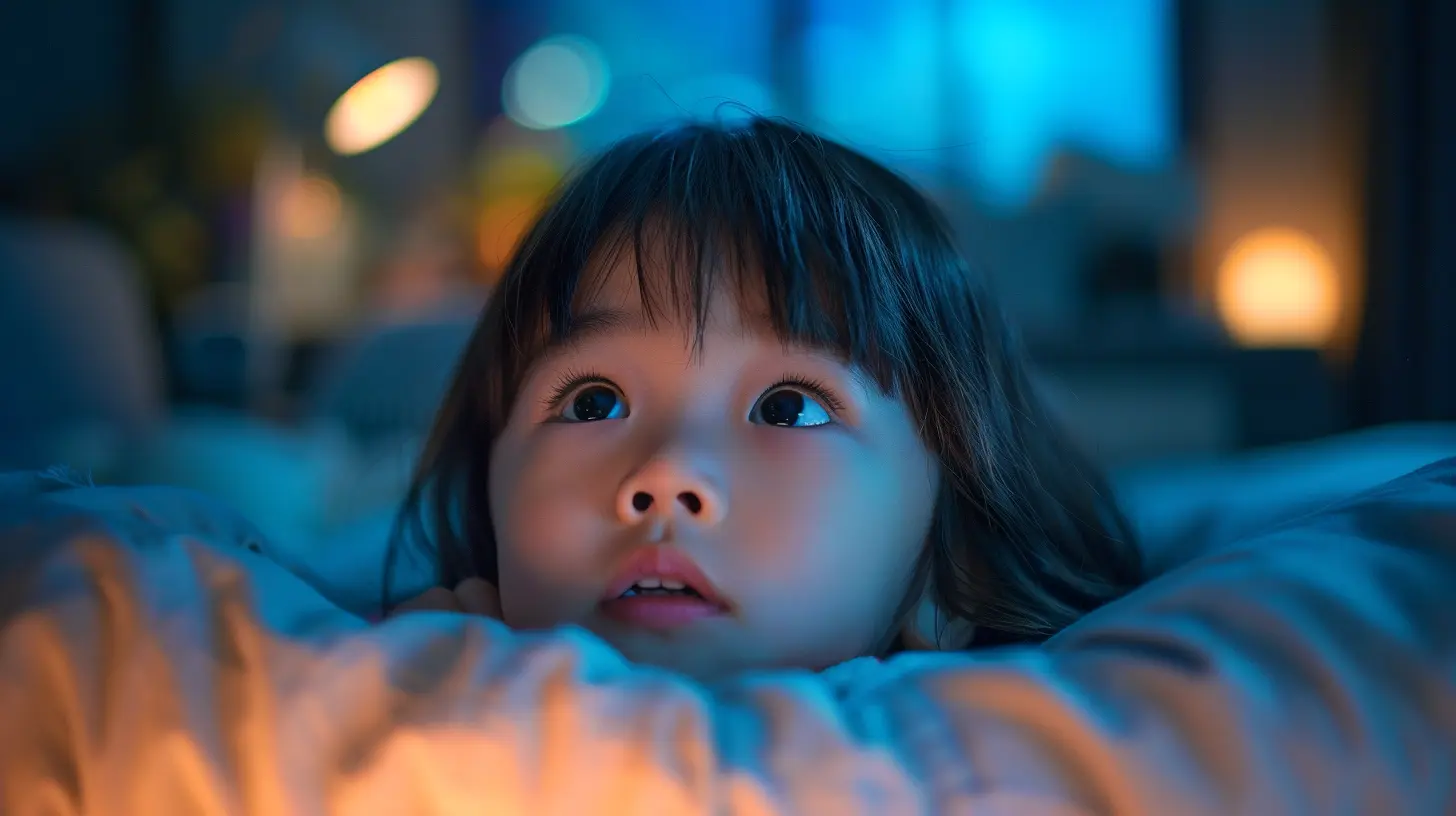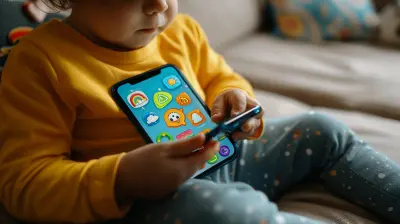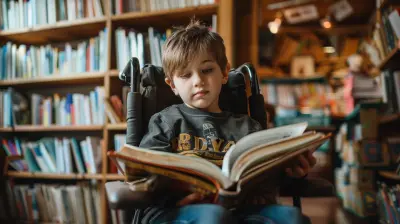The Impact of Blue Light on Your Child's Eyes and Sleep Patterns
17 November 2025
Let’s face it—screens are a huge part of our daily lives. From cartoons on tablets to school work on laptops, kids today are growing up surrounded by digital devices. It’s almost like their fingertips were made for touchscreens! While this tech-filled world brings tons of convenience and learning opportunities, there’s a sneaky intruder that tags along—blue light.
You’ve probably heard warnings about blue light, especially from devices like smartphones, tablets, and TVs. But what exactly is blue light, and why should you care? More importantly, how is it affecting your child’s eyes and their much-needed sleep?
Well, grab a cozy seat (and maybe your reading glasses), because we’re diving deep into this modern parenting dilemma. Don’t worry—I’ll keep it simple and straight from the heart.
What Is Blue Light, Anyway?
Okay, let’s get nerdy for a sec—but just a little.Blue light is a type of visible light with a short wavelength, which means it produces a ton of energy. It’s naturally emitted by the sun, which is why you feel so alert during the day. But artificial sources of blue light—like screens, LED lights, and even some light bulbs—are where things get tricky.
Now, here's the kicker: while a bit of blue light can be helpful (like helping us stay awake during the day), too much of it, especially at the wrong time, can throw your child’s body clock completely out of whack.
Why Kids Are More Sensitive to Blue Light
You might wonder, "Why all the fuss about kids and blue light? Doesn't it affect everyone the same way?"Good question. Here's the deal—children's eyes are still developing. Their lenses and corneas are much clearer than those of adults, allowing more blue light to reach the retina. That means their eyes absorb more of that powerful light, which could potentially lead to more damage over time.
Think of their eyes like brand-new camera lenses—crystal clear and super sensitive.
Also, kids don’t blink as often as adults when staring at screens, making them more vulnerable to digital eye strain and other side effects. So, while you and I might get tired or dry eyes after an hour on our phones, your little one might be getting an even bigger dose of discomfort without even realizing it.
The Eye-Opening Effects of Blue Light on Vision
All those cute YouTube videos and educational games aren't as innocent as they seem when it comes to your child's eyesight.1. Digital Eye Strain (Yep, It’s Real)
Have your kids ever complained about dry eyes, blurry vision, or headaches after screen time? That could be digital eye strain at work. Staring at screens for long stretches means less blinking and more focusing—two things that tire out the eyes, fast.And because blue light scatters more than other types of light, it doesn’t focus as easily. So, the eyes have to work harder to make sense of what they see. It’s kind of like trying to read through a foggy window. Not fun.
2. Potential Long-Term Damage
While the long-term effects of blue light on children's eyes are still being studied, some research suggests that prolonged exposure may contribute to retinal damage and increase the risk of macular degeneration later in life.Now, I’m not here to scare you. But wouldn’t it be better to take some steps now rather than wait for studies to confirm what we already suspect?
Blue Light and Sleep: A Not-So-Sweet Dream Combo
Remember how we said blue light helps keep us alert during the day? That's because it suppresses melatonin—the hormone that signals our bodies it's time to sleep. Pretty handy during a morning Zoom call, not so much when it’s bedtime.1. The Melatonin Meltdown
When your child uses screens in the evening, their brain thinks it’s still daytime. So instead of winding down, their bodies stay alert, making it harder to fall asleep. That’s why screen time right before bed often leads to bedtime battles and restlessness.Imagine trying to fall asleep with the sun shining through your window—kind of impossible, right? That’s what screens are doing to your kid’s brain.
2. Irregular Sleep Patterns
Too much blue light at night can mess with your child’s internal body clock, or circadian rhythm. This might lead to irregular bedtimes, trouble falling asleep, frequent wake-ups, or even groggy mornings. And let’s be honest—no one likes a cranky, sleep-deprived kid at 7 a.m.Signs Your Child Might Be Getting Too Much Blue Light
Not sure if blue light is causing trouble? Here are a few common signs to watch out for:- Red or irritated eyes
- Frequent headaches
- Complaints of dry or tired eyes
- Trouble falling asleep
- Daytime sleepiness
- Mood swings or crankiness
If those symptoms sound familiar, there’s a good chance screens and blue light might be the culprits.
How to Protect Your Child’s Eyes and Sleep (Without Going Tech-Free)
Let’s be real—banning screens altogether isn’t practical. Digital technology is practically woven into our kids’ education and entertainment. But there are smart ways to reduce the negative impacts of blue light without completely cutting ties with tech.1. Set Screen Time Limits
Here’s a golden rule: the less, the better—especially in the evening.Try to limit non-essential screen use to no more than 1-2 hours a day, depending on your child’s age. And for at least one hour before bedtime, go completely screen-free. Instead, opt for calmer activities like reading a physical book, drawing, or quiet play.
2. Use Blue Light Filters
Most devices these days have built-in features like "Night Shift" or "Night Mode" that reduce blue light emission in the evening. You can also install blue light filter apps or buy screen protectors that do the same trick.It’s like giving your device a pair of sunglasses—cool, right?
3. Get the Right Lighting
When your child uses a device, make sure they’re in a well-lit room. This reduces the strain on their eyes and helps minimize the effects of blue light. Avoid letting them watch screens in the dark—it’s not only spooky for their eyes but also way harsher on them.4. 20-20-20 Rule
Teach your kids this easy rule: Every 20 minutes, look at something 20 feet away for at least 20 seconds. It’s like a mini eye vacation, and it really helps reduce strain during screen time.5. Encourage Outdoor Play
Good old-fashioned sunshine (in moderation, of course) is super beneficial for eye development, especially in kids. Natural light helps keep their vision sharp and gives them a chance to burn off energy, which—bonus—makes bedtime easier.So next time the weather’s nice, send them outside. Nature is still the best screen-free zone!
Tools That Can Help: Blue Light Glasses for Kids
You’ve probably seen those trendy blue light blocking glasses. And yes—they’re available for kids too!While research is still ongoing about how effective these glasses are for long-term protection, many parents swear by them for reducing digital eye strain during homework or screen-heavy days.
Just make sure you pick glasses with certified blue light blocking lenses—not just clear fashion frames!
Creating a Tech-Friendly Sleep Routine
Here’s how to wind down the right way:- 1 hour before bed: Turn off screens. Yes, it's hard. No, it won't ruin their lives.
- Dim the lights: Swap out bright white LEDs for warmer tones. You can even use a Himalayan salt lamp for some cozy vibes!
- Bedtime rituals: A warm bath, a bedtime story, or soft music can signal to your child’s body that it’s time to sleep.
- Stick to a schedule: Try to keep bedtime and wake-up times consistent—even on weekends.
Consistency is key when it comes to better sleep. And a predictable routine can work wonders for both your child and your sanity.
The Bottom Line
Blue light is everywhere—and while it’s not all bad, too much of it, especially near bedtime, can mess with your child’s sleep and eye health. As with anything in parenting, it’s all about balance.You don’t need to ban devices (because let’s be honest—sometimes those cartoons buy you the 20 quiet minutes you need). But being aware of blue light’s impact gives you the power to make smarter decisions for your family.
A few tweaks to your child's routine and screen habits can go a long way in protecting those precious eyes and ensuring they get the restful sleep they need to grow, learn, and thrive.
So next time you hand them a tablet, just ask yourself—"Is this the best time?" It could make all the difference.
all images in this post were generated using AI tools
Category:
Tech And KidsAuthor:

Noah Sawyer

